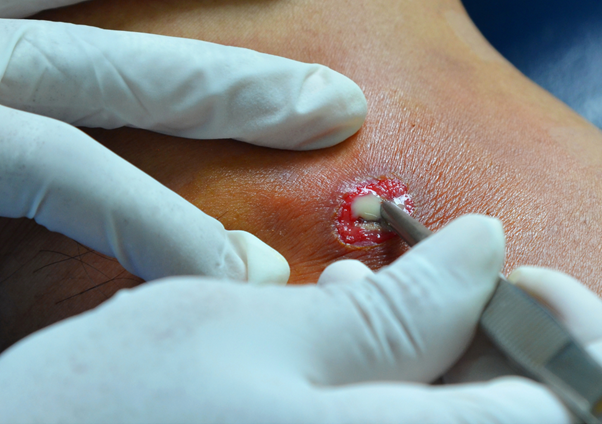- Home
- Abcess Drainage

Understanding Abscess Drainage
An abscess is a localized infection characterized by a collection of pus that causes swelling and inflammation in the affected area. Abscess drainage is a procedure to remove the pus and alleviate the associated symptoms. This procedure is essential to prevent the spread of infection and promote healing.
Indications for Abscess Drainage
Abscess drainage is indicated when an abscess causes significant discomfort, risk of spreading infection, or does not resolve with antibiotics alone. Common reasons for abscess drainage include:
- Pain and Discomfort: Severe pain and swelling due to the abscess.
- Infection Risk: The risk of the infection spreading to surrounding tissues or entering the bloodstream.
- Non-Responsiveness to Antibiotics: Abscesses that do not improve with antibiotic treatment alone.
The Abscess Drainage Procedure
Abscess drainage involves making a small incision to allow the pus to escape, reducing pressure and infection.
Preoperative Evaluation
- Assessment: Patients undergo a physical examination and may have imaging studies (such as ultrasound or CT scan) to locate and assess the abscess.
- Preparation: Patients receive pre-operative instructions, which may include fasting guidelines and medication adjustments.
Surgical Procedure
- Local Anesthesia: The area around the abscess is numbed using a local anesthetic to minimize discomfort during the procedure.
- Incision and Drainage: A small incision is made over the abscess to allow the pus to drain out. The cavity is then cleaned thoroughly to remove any remaining infection.
- Packing: In some cases, the cavity may be packed with sterile gauze to keep it open and allow further drainage.
- Closure: The incision may be left open to continue draining or closed with sutures, depending on the size and location of the abscess.
- Duration: The procedure typically takes about 30 minutes.
Postoperative Care
- Wound Care: Patients are provided with instructions on how to keep the area clean, change dressings, and monitor for signs of infection.
- Pain Management: Over-the-counter pain relievers or prescribed medications may be recommended to manage postoperative discomfort.
- Antibiotics: In some cases, antibiotics may be prescribed to treat any remaining infection.
- Follow-Up Care: Scheduling follow-up appointments to monitor healing and discuss any concerns.
Potential Risks and Complications
While abscess drainage is generally safe, it carries certain risks and potential complications, including:
- Infection: At the incision site, which may require additional treatment.
- Bleeding: Excessive bleeding may occur, necessitating further medical attention.
- Recurrence: The abscess may reoccur, requiring additional drainage procedures.
- Scarring: There may be some scarring at the incision site.
Why Choose Neo TrueNorth for Your Abscess Drainage?
- Experienced Surgeons: Our board-certified surgeons specialize in performing abscess drainage with precision and care.
- Advanced Diagnostic Tools: Neo TrueNorth is equipped with state-of-the-art diagnostic technology to accurately evaluate and locate abscesses, ensuring effective treatment.
- Personalized Care: We provide individualized care plans tailored to each patient’s unique needs and health status, ensuring the best possible outcomes.
- Comprehensive Support: Our multidisciplinary team offers comprehensive support, including pre-operative counseling, post-operative care, and follow-up consultations, to ensure a positive surgical experience.
- State-of-the-Art Facilities: Neo TrueNorth is equipped with modern surgical facilities and the latest technology to provide safe and successful abscess drainage in a comfortable environment.
Trust Neo TrueNorth for expert care in abscess drainage. Contact us today to schedule a consultation and learn more about your treatment options.
Meet Our Experts

Dr. Poornima
General Surgeon



